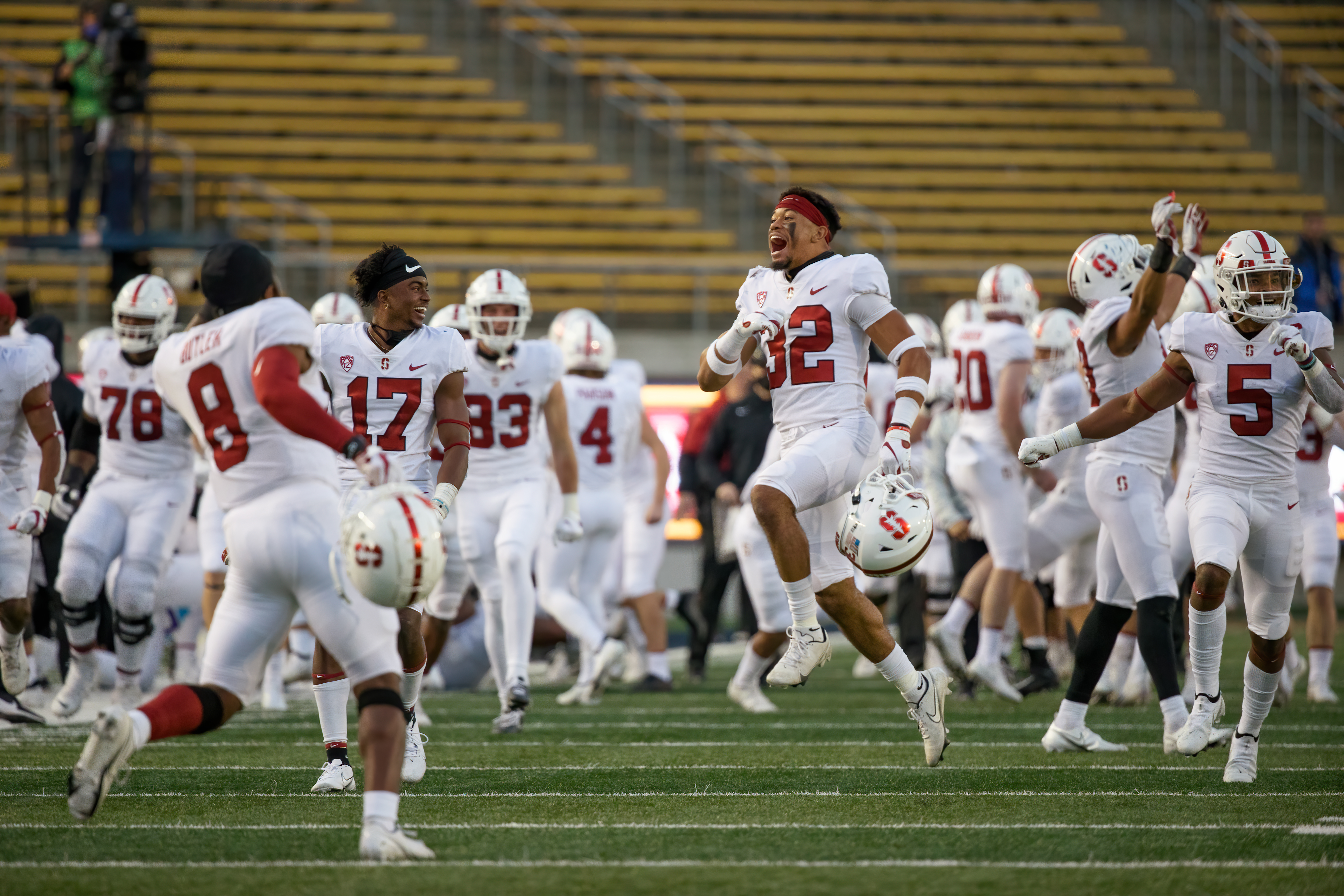The Axe is back. If Stanford’s 2020 season ended tomorrow, it would still be a success. Perhaps worse than last year’s 4-8 record was handing the Axe back to Berkeley after a record-breaking nine-year Big Game winning streak. Now, order is restored in the Bay Area football universe.
It appears that Stanford’s season will continue, even as the team relocates to the Pacific Northwest as a result of the latest Santa Clara county health restrictions. The Cardinal now will face No. 23 Washington in Seattle at 1:00 p.m. on Saturday.
The Huskies’ 3-0 start under first-year head coach Jimmy Lake has vaulted them toward the top of the Pac-12 Championship discussion. Washington boasts the top defense in the Pac-12, and Lake, a defensive back whisperer, has the second-ranked pass defense in the country. Offensively, the Huskies rely on the run game, while the defense does the heavy lifting.
Unlike Washington, Stanford is out of the Pac-12 race. But the Cardinal still have plenty to play for. Winning out could land Stanford in a bowl game. The Cardinal have not won in Seattle since 2014, and the all-time series between these Pac-12 North rivals, dating back to 1893, is tied at 43 wins each (with four ties). Here’s three keys to reclaiming that series lead and building off Stanford’s Big Game momentum:
1) Run, Austin, run!
Sophomore running back Austin Jones only averaged four yards per rush in Big Game, but the East Bay native carried the offense in the second half. Jones ran for 85 yards and two touchdowns, showing off power and burst as the Cardinal offensive line gradually wore down Cal’s depleted front seven. Against Washington’s elite secondary, running the ball may be all that Stanford can do.
While Washington ranks second nationally in passing yards per game allowed, the Huskies are more vulnerable on the ground. Washington’s first three opponents have rushed for an average of 151.3 yards per game, good for 50th in the country. Last week, Utah amassed a 21-0 lead on the Huskies by keeping it on the ground. If the Utes had not caught a crippling case of the turnover bug, they would have run Washington out of Husky Stadium (spoiler alert).
Thanks to senior quarterback Davis Mills and his elite receiving corps, Stanford is more capable of balance than Utah. The Cardinal should aim for a similar playcalling distribution as Big Game, where they attempted 32 passes to 31 runs (not counting sacks). But Stanford cannot abandon the run as it did against Colorado. Washington is too good in the secondary and will not let Mills throw all over the field. Jones, along with fellow sophomore back Nathaniel Peat, may have to lead the offense again.
2) Create third-and-long
Whereas Washington’s run defense is the weak link on that side of the ball, the run game is the focal point of the Huskies’ offense. Washington runs the ball 58% of the time using a running-back-by-committee approach. Sean McGrew leads the way with 162 yards, but each of Washington’s top three running backs have between 23 and 30 carries. If Washington can run the ball effectively on first and second down, they will ground-and-pound Stanford into a blowout.
But if the Cardinal can slow down the Huskies run game, they can win on third down. Washington QB Dylan Morris threw for 272 yards against Utah in the Huskies’ comeback, but his three interceptions helped put UW in that hole. Morris is averaging 214 yards per game. Lake likes to play conservative football, making Morris more of a game manager than elite playmaker. Stanford must force Washington into third-and-long situations where Morris has to win with his arm — which could be a recipe for Washington turnovers…
3) Keep winning turnover battle
Stanford has just one turnover through three games while forcing five turnovers from its opponents. Winning the turnover battle was perhaps the biggest factor in Stanford’s Big Game victory (besides blocked kicks, of course), especially since the Cardinal turned two Cal turnovers into two short-field touchdowns. Against a team that plays slow and limits possessions like Washington, winning the turnover battle will be even more critical.
Despite Morris’ three interceptions, Washington still somehow won the turnover battle against Utah thanks to four Utes turnovers. The Huskies’ elite defense won that game, just like Lake wants it. Stanford cannot hand this game to Washington with turnovers, and creating short fields by forcing Huskies’ mistakes might be the only way to score on Lake’s defense.
Stanford salvaged its season last week. Now, the Cardinal have a chance to prove they can still compete with the Pac-12’s best. If the turnover battle swings Stanford’s way, the Cardinal might just build those Big Game blocks into a full scale turnaround.
Contact King Jemison at kingj ‘at’ stanford.edu.
